Online community engagement has truly transformed how we connect, communicate, and access information. This transformation has also begun to extend to older adults by empowering them to use technology as a way to enhance their livelihoods and well-being.
Although older adults previously trailed behind younger generations in online engagement, according to the Australian Communications and Media Authority (ACMA), “Internet use for 65-to 74-year-olds’ has increased from 71% in 2019 (before COVID-19) to 98% in 2022. Similarly, the proportion of those aged 75 and over who are now online has almost doubled, from 52% to 94%.”.
While there may still be some barriers to overcome, online community engagement can be a powerful way to empower older adults by facilitating their ability to remain socially active, share their accumulated wisdom, and engage in meaningful activities.
But how can you effectively target older adults in order to seek feedback? In this article, we will explore how to combat these challenges by sharing five ways to empower online community engagement in older adults.
How Should We Define ‘Older Adults’ in Our Community?
In many countries, older adults are typically classified as individuals aged 65 years or older. This age group can be further categorized into three distinct subgroups:
- 65 to 74 years
- 75-84 years
- ≥ 85 years
While communicating with this demographic, it’s typically advised to avoid using phrases like ‘seniors’, ‘elderly’, ‘the aged’, ‘aging dependents’, ‘old-old’, or ‘young-old‘ as this can be perceived as discriminatory and can contribute to ageism. Therefore, it’s essential to use more respectful and inclusive language such as older persons, older people, older adults, older patients, older individuals, persons 65 years and older, or the older population to foster a more welcoming and equitable environment while promoting positive interactions with older individuals.
While it’s true that some older adults may need more support or technological assistance to keep up with the ever changing technological environment, it’s also important to be mindful to not make any assumptions, as this demographic can also possess a range of abilities and different skill sets, including being fully capable of using technology independently. Remember, this age group invented most of the technology we use today, like mobile phones and the internet, just to name a few.
During the COVID-19 pandemic, older adults had swiftly embraced technology, especially in the healthcare sector, through digital health solutions. They utilized applications like telehealth and smartphone apps to improve access to care, maintain communication with healthcare providers, and manage their health conditions.
Technology is also used in this age group to improve older adults’ social well-being and quality of life. With the help of technology such as calling and messaging, older adults can stay connected with loved ones and maintain social connections, which can help to reduce feelings of isolation and loneliness.
Therefore, to engage and empower older adults effectively, councils must tailor their approaches to match individuals’ specific life stages and align with their aspirations, interests, and objectives.
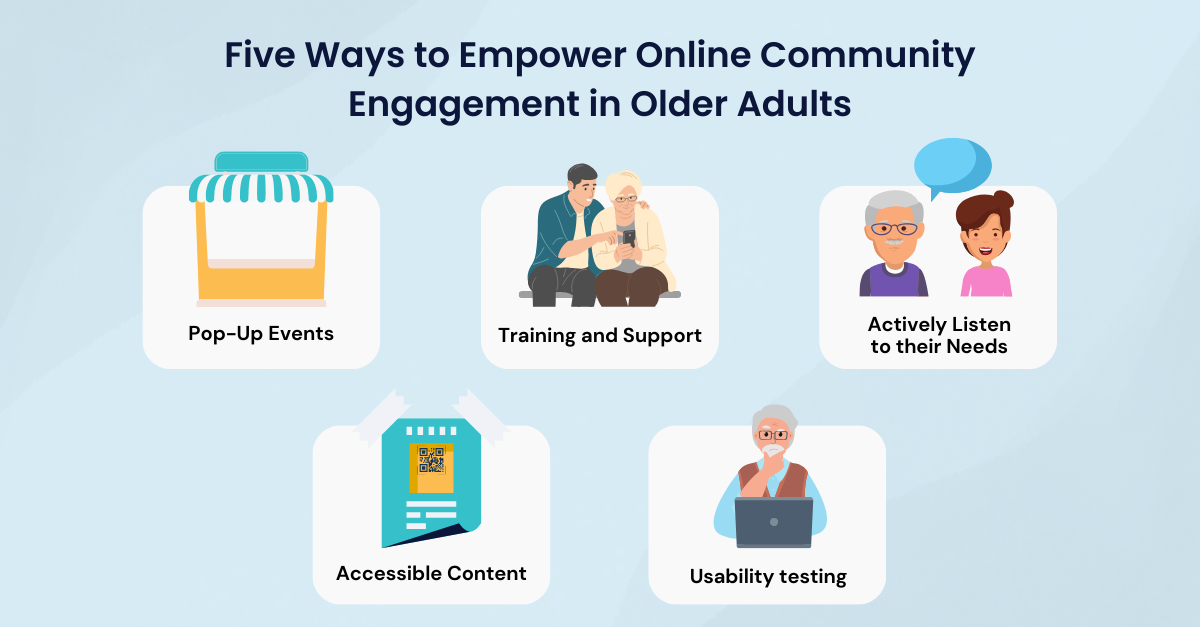
Five Ways to Empower Online Community Engagement in Older Adults
So, how can you empower older individuals to engage in public participation? Let’s explore five ways to help foster meaningful connections and promote community engagement among older adults.
- Pop-up Stalls at Community Events
- Training and Support
- Actively Listen to their Needs
- Accessible Content
- Usability testing
1. Pop-up Stalls at Community Events
Empowering older adults can be achieved by honing in on their hobbies and interests, by recognizing what brings them joy or holds significance. For instance, you might consider having a pop-up stall at a local community event.
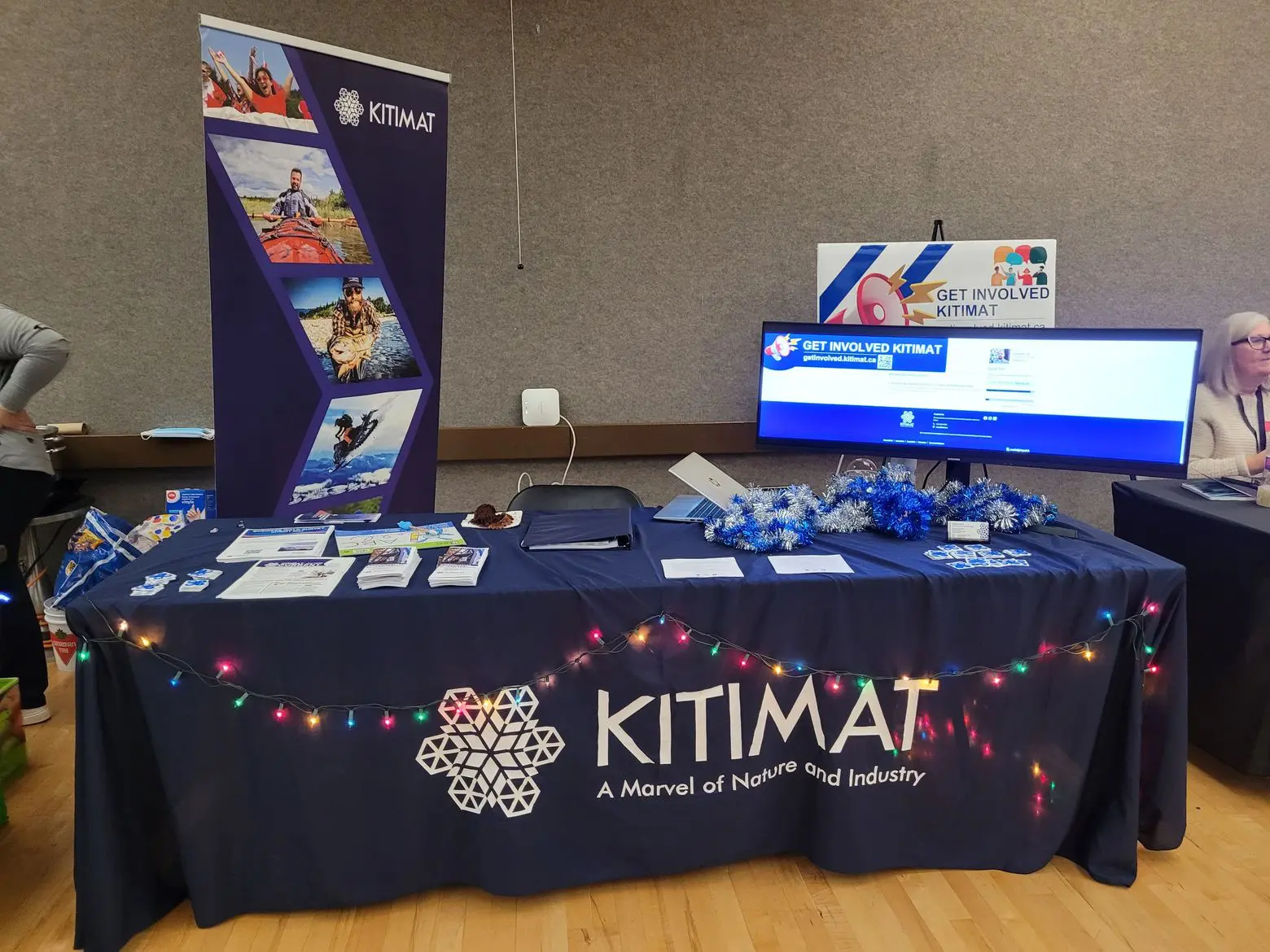
Kitimat, is a great example of a municipal council featuring a pop-up booth at a local craft fair. Showcasing features such as a large screen to assist with accessibility and visibility, along with flyers and brochures to educate residents, it allows councils to connect with diverse range of stakeholders in a manner that may resonate with their current interests.
2. Training and Support
Providing comprehensive training and support – particularly to those less technologically advanced – offers an additional method to assist older adults in navigating and utilising tools effectively.
To cater to varying preferences such as mobility and transportation, you might consider offering hybrid engagement by offering both online and in person face-to-face sessions. This is because while older adults may prefer in-person guidance, others may prefer online resources.
Workshops and Tutorials: Consider conducting workshops and tutorials both online and offline that are specifically tailored towards older adults. These sessions should primarily focus on teaching them how to use online digital platforms, the importance of community engagement, social media, and how to utilize other digital engagement tools.
Tech Support Hotline: It’s highly advised to ensure older adults have access to a reliable source of assistance and support for whenever they encounter issues or have questions about using online platforms. Having knowledgeable customer support staff available via phone or email can significantly reduce frustration and enhance their online experience.
Buddy System: Implement a buddy system by pairing tech-savvy volunteers with older adults to provide one-on-one assistance and guidance. This not only fosters a sense of community but also ensures that older individuals receive personalized help from a peer.
These sessions can also act as virtual spaces for older adults to connect with like-minded individuals who share their interests, hobbies, and life experiences. By participating in discussion forums, social groups, and workshops, participants can engage in meaningful conversations, sharing ideas and stories, and building friendships, encouraging older adults to view these platforms as valuable tools for social interaction.
3. Actively Listen to their Needs
Effective communication is the key for building stronger relationships. Therefore, ensure you are actively listening to the needs, concerns, and interests of older adults within your community to enhance public participation.
To enhance communication even further, implementing an easy feedback system for continuous improvement can prove to be beneficial for gathering input from older adults. This feedback loop then allows community leaders and service providers to receive direct and timely information about the effectiveness of their initiatives, programs, or services.
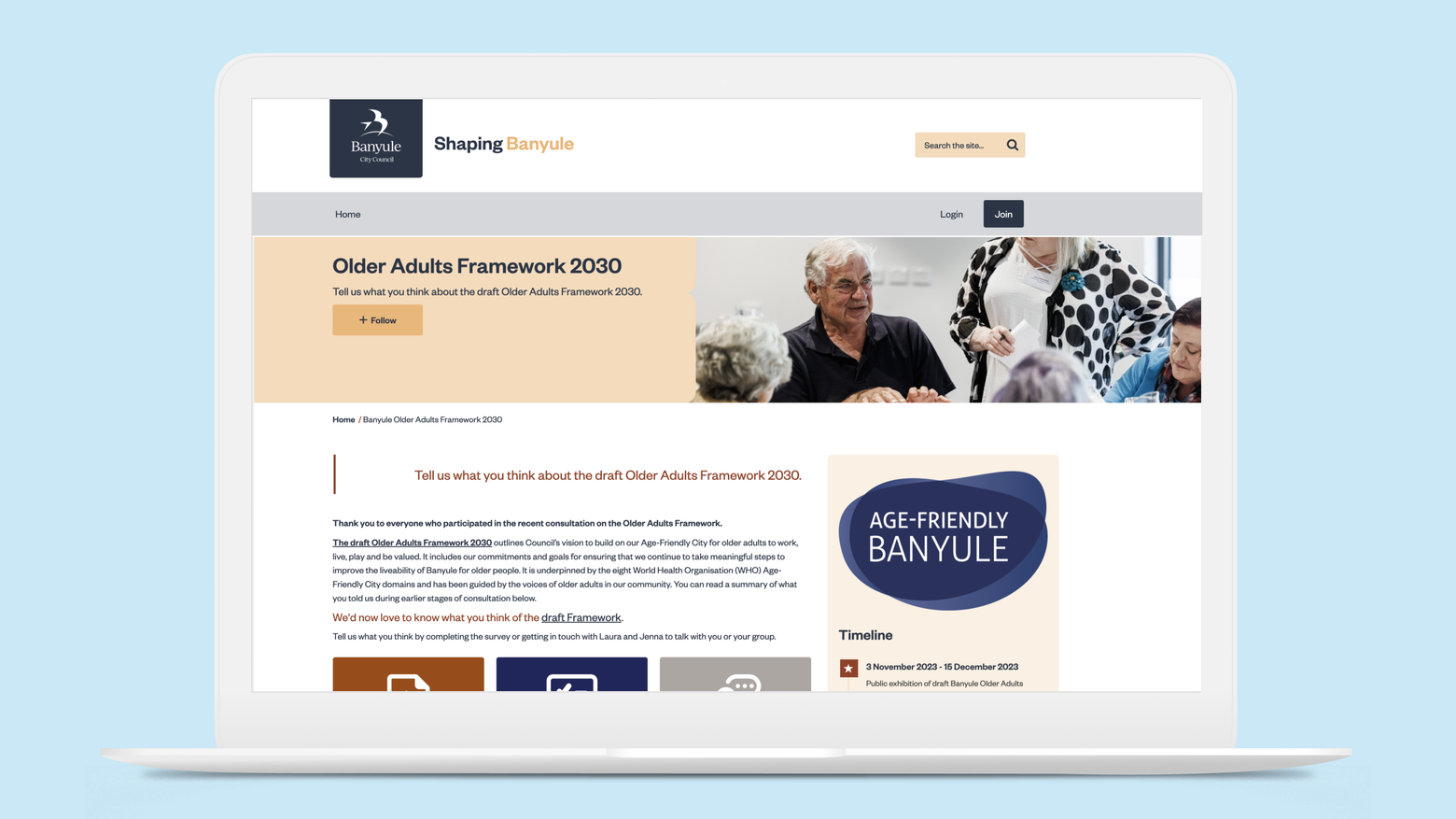
The City of Banyule’s Banyule Older Adults Framework 2030 project is great example of a Council gathering feedback from older adults by looking for areas of improvement within a community.
For this initiative, Banyule received input from its residents on ways to help enhance the quality of life for older individuals, considering that 24.7% of the population in Banyule is aged 60 and above. Between July and August 2023, a total of 388 individuals engaged in the community involvement endeavor. This participation included 53 attendees in a community focus group, 201 participants in a meeting with their community group, and 134 respondents who completed either an online or paper survey.
The feedback that Banyule received from its residents had aligned with the eight Key Domains that’s outlined in the World Health Organization’s Age-Friendly Cities Framework. Here’s a summary of what was gathered.
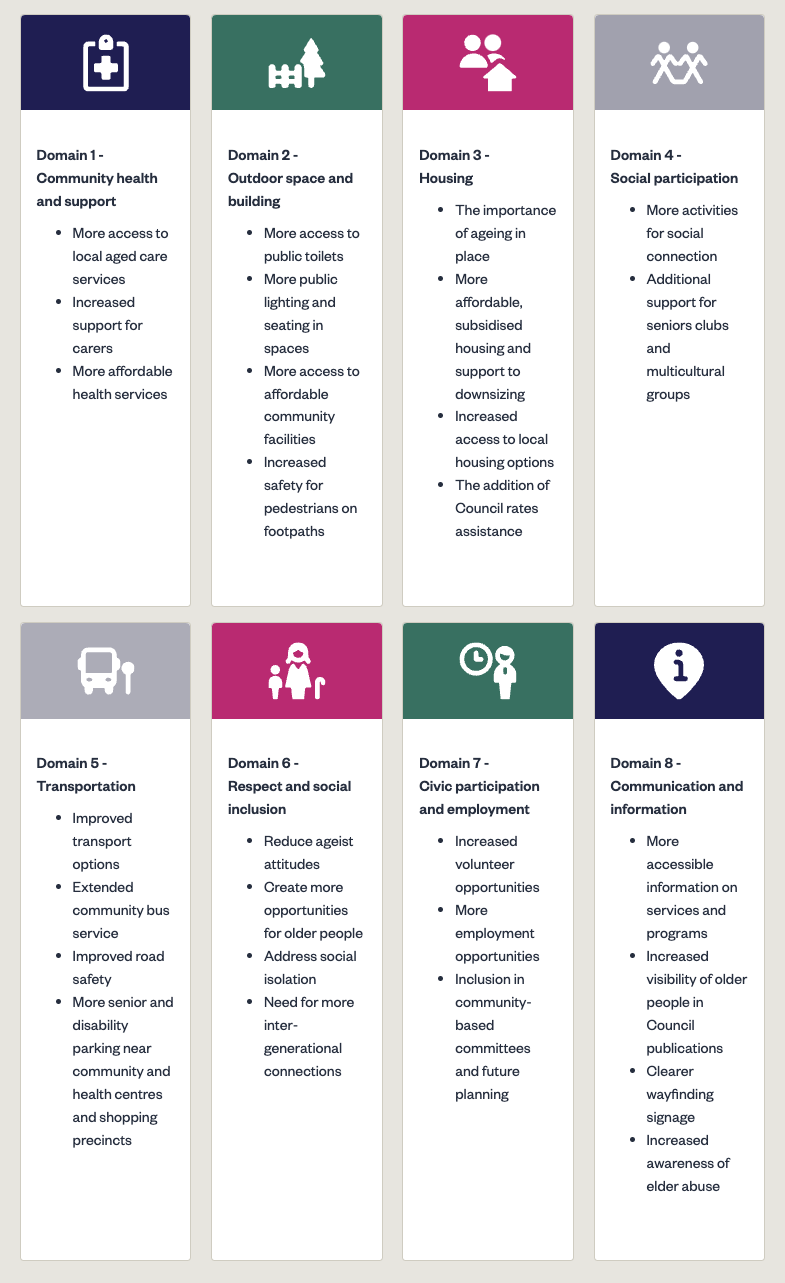
4. Accessible Content
Creating accessible content is a key element in supporting older adults as they engage with online platforms. Therefore, to cater to a wide range of learning preferences and abilities, it’s important to make content available through multiple formats.
Videos: Videos equipped with captions are an excellent way to visually demonstrate how to perform certain tasks or navigate online platforms for older adults who are more comfortable with visual learning. These videos should be short, focused, and easy to access online, allowing older adults to view them at their own pace.
Audio: Another aspect of accessible content is by providing audio resources. Some older adults may prefer to listen to instructions rather than read them. Consider incorporating audio recordings that guide users through various online tasks or provide explanations.
Printed materials: For those who may struggle with technology use or access to equipment, offer printed materials featuring step-by-step screenshots, QR codes, user-friendly guides, and easily understandable text. Materials such as flyers, magazines, and quick step guides can be distributed during face-to-face sessions and workshops, and focus groups.
By simplifying your information, you can help improve memorability in older adults. With Social Pinpoint, you also have the ability to print out surveys or encourage the use of tablets at pop-ups to centralize data capture.
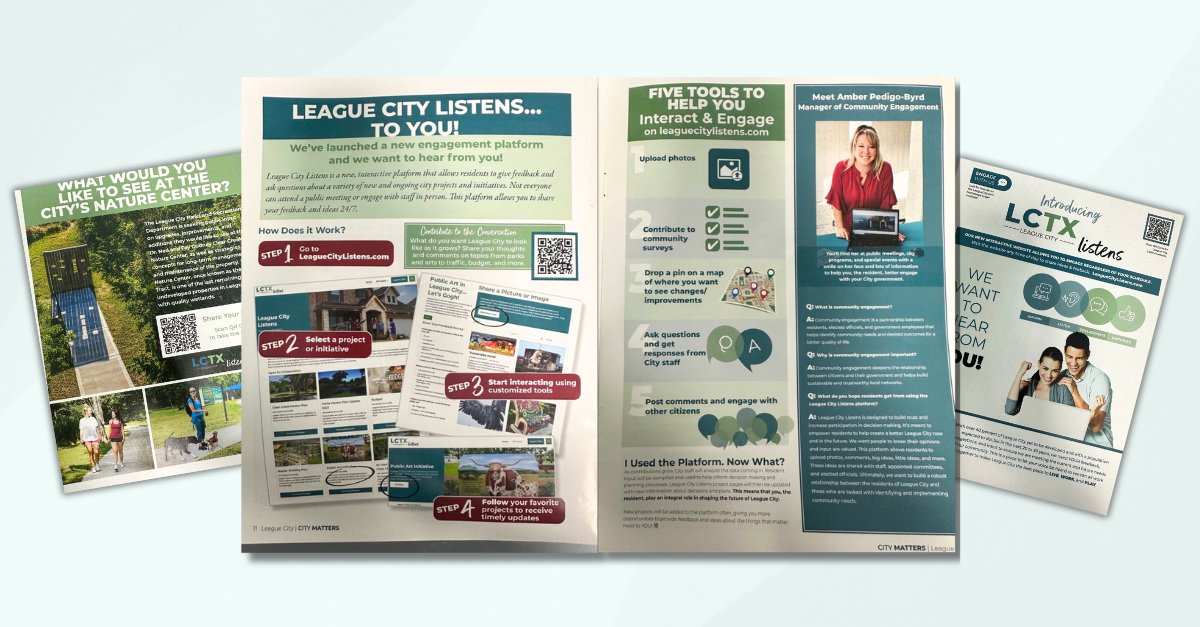
The City of League City is a great example of utilizing printed materials to engage with their community, by incorporating QR codes onto their flyers, to guide residents directly to their digital engagement platform, League City Listens.
“We also highly recommend printed materials to guide residents to the platform. This layout is nice because it describes the steps in a simplistic format. It’s always good to remember people who are not familiar with your online platform are probably seeing it for the first time. It’s never wise to assume they will know their way around each tool. A quick description and “how to” can really change your level of engagement with residents.”
– Amber Pedigo-Byrd, Manager of Community Engagement and Special Projects at City of League City
5. Usability Testing
Empowering older adults can include conducting usability tests with this demographic before the platform’s official launch, ensuring easy navigation and user-friendliness. This process typically entails having a group of older adults interact with the platform, then providing feedback on their user experience. This might be through avenues such as community reference groups and private projects.
During these usability tests, designers and developers observe how older users interact with the platform by paying close attention to their navigation patterns and how they interact with the user interface, and ease of use. Test participants might also be asked to perform typical actions on the platform, such as signing up, searching for information, or engaging in specific tasks related to the platform’s purpose.
The feedback obtained during usability testing is invaluable for making necessary adjustments and improvements to the platform. It helps identify potential pain points, areas of confusion, or features that may need simplification or enhancement to make the platform more accessible and user-friendly for older adults. This iterative process ensures that the final product is well-suited to the needs and preferences of the target demographic, ultimately promoting a more inclusive and engaging digital experience for older users.
Engaging with older adults through a blend of hybrid community engagement strategies by combining face-to-face interactions with online tactics, can greatly enhance feedback from this demographic. This is because they can recognize the significance of their involvement empowers them to make meaningful contributions to the community’s progress, guaranteeing a more inclusive and promising future.
By leveraging the capabilities of online platforms, we can establish a secure environment where the voices of older adults are recognized, listened to, and valued.












